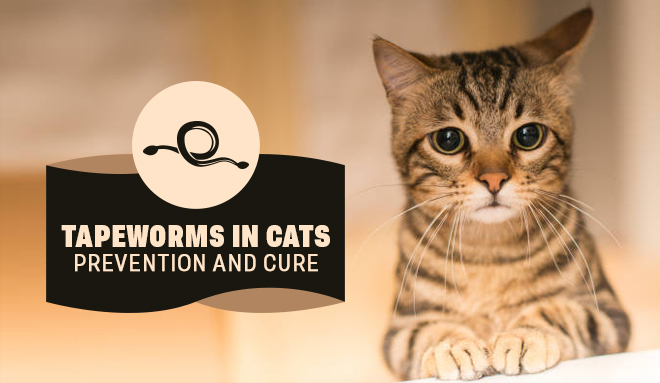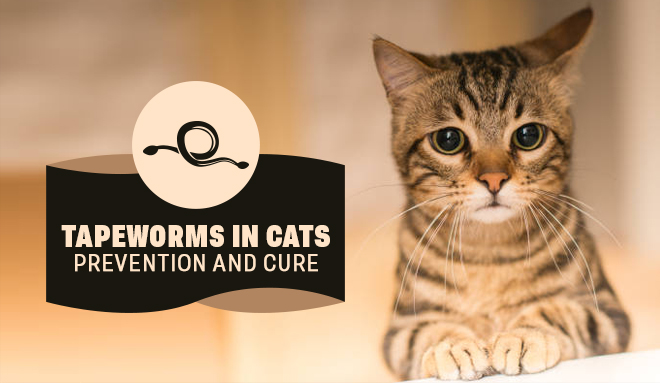Worms are the small creatures that make the life of cats a nightmare. Fleas and ticks are most commonly affecting parasites that live on a cat’s skin, but what about the worms that find their way into internal organs like the intestine. Here we are talking about tapeworms, the nasty parasites that can infest your cat’s skin through another parasite like fleas and then find their way into the intestine.

This blog will take you through everything you need to know about tapeworms, how they affect pets, and how to prevent them.
What are tapeworms and how do they infect cats?
Tapeworms are worms, usually flat, long, and white in color. With their hook-like mouths, they can stick to the cat’s small intestines. They normally grow up to the size of 4 to 24 inches. When tapeworms grow, they shed their segments called proglottids. These grain-sized proglottids can be seen in cat waste.
The most common tapeworm that affects cats is Dipylidium Canium. There are many ways cats can get affected by tapeworms. The most common is fleas. Fleas mostly transmit tapeworms to cats while they are self-grooming. Once the tapeworms reach the cat’s body, they will start growing into adult tapeworms. Tapeworms can also be transmitted in cats when they ingest small animals like a mouse or a squirrel.
How to know when my cats have tapeworms?
You may see your cat vomiting a few pieces of a living worm; this is one indication. Other than that, you may notice a common symptom of tapeworm infection in cats, i.e sudden weight loss. Yet, the most determining way to know if your cat is infected by tapeworm is to check its feces; you would probably find those tiny white rice-sized tapeworm parts in it. These proglottids may also appear in the area around the cat’s anal region.
How to Treat Tapeworms in Cats?
If you have acknowledged tapeworms in your cat, you must immediately start its treatment, which fortunately is very easy. To treat adult tapeworms in cats, you need to start its medication, commonly referred to as dewormers. These treatments come in two forms, i.e. oral treatment, and can also be given through injection.
These treatments are proven to be safe and can be easily observed by feline human parents. The full course of tapeworm treatment that your vet prescribes will effectively dissolve tapeworms in the intestine.
After the course, you normally will not see the discretion of worms in the feces, but in some cases, it may occur, usually when the infestation is higher than normal.
How to Prevent Tapeworms?
Treating tapeworm in cats is very effective with the dewormer medication; however, you should never underestimate the importance of prevention. After all, the famous proverb “prevention is better than cure” exists for a reason. You may not see fleas ingesting tapeworms in cats until there is an infection.
To prevent tapeworm infestation, it is also vital to treat the environment. Do not expose your cat much outdoors to keep it out of reach of animal dung, garbage, or carcass places where tapeworm infected fleas are more likely to be present. This is why one of the most effective approaches for preventing tapeworm is flea control. Thus flea treatment is recommended for pets once every month.
At DiscountPetCare Australia, you get the best flea and tapeworm treatment to treat tapeworm infections and kill external parasites from your cat’s body. Consult your vet on the right treatment suited to your cat and make your purchase at DiscountPetCare for the best product at a discounted price.
Bottom Line
Worms inside a cat’s body can feel horrifying and disgusting. However, the silver line is that is easy to get rid of it. Just follow the preventive and curing measures that are mentioned in this blog. Other than that, you should have a close look at your cat and have an annual vet checkup.


